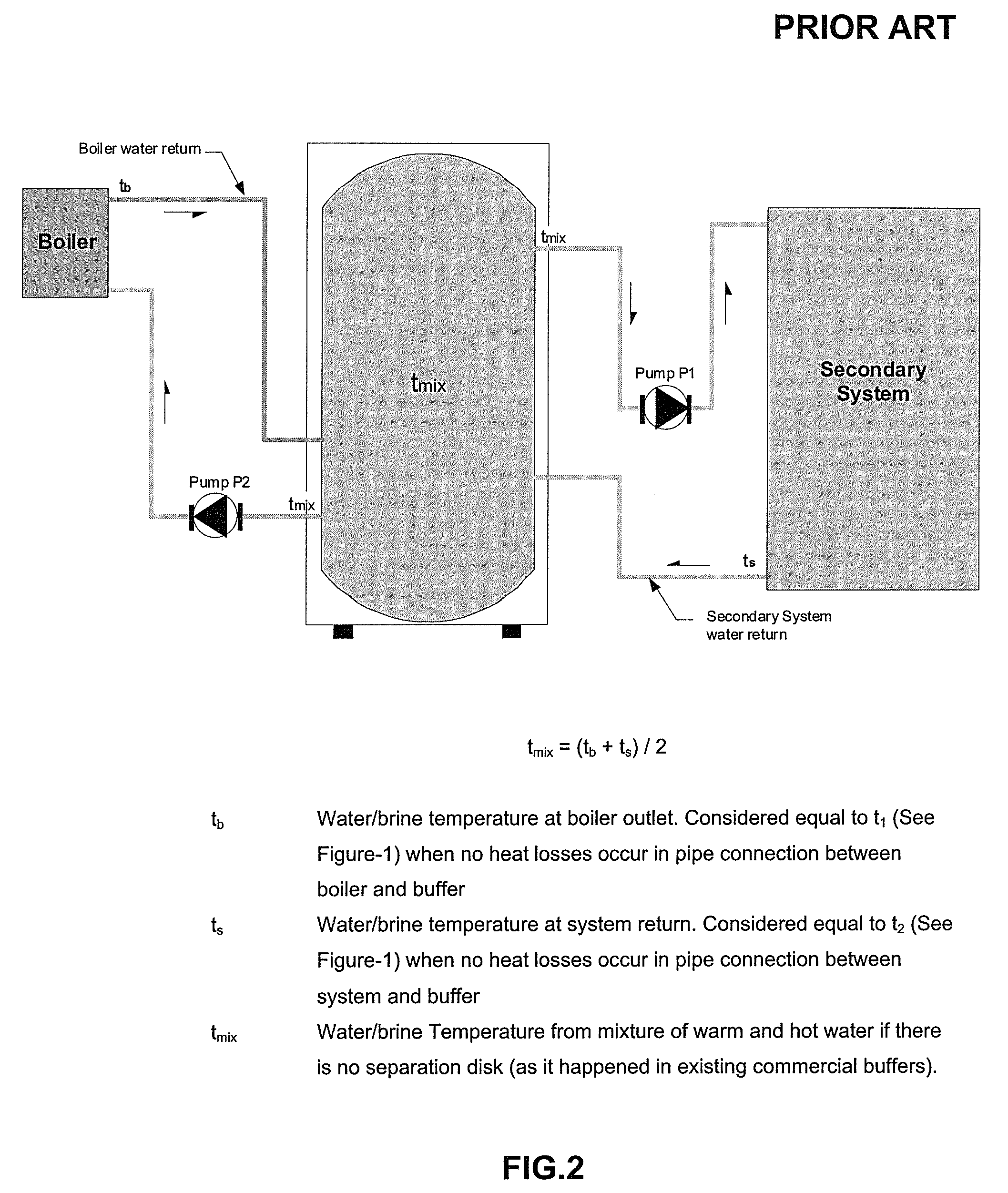Heating or cooling system featuring a split buffer tank
a technology of heating or cooling system and buffer tank, which is applied in the direction of energy-efficient heating/cooling, heating fuel, sustainable buildings, etc., can solve the problems of loss of high-efficiency boiler during continuous operation, unsolved, and forced to look the other way
- Summary
- Abstract
- Description
- Claims
- Application Information
AI Technical Summary
Benefits of technology
Problems solved by technology
Method used
Image
Examples
Embodiment Construction
1. General Character of the invention
[0064]The present invention relates to a heating / cooling system operating on the basis of a SPLIT BUFFER TANK, as shown in FIG. 1. Its design includes a mechanical disk (2) in order to separate the hot HSP flow return (19) from the warm secondary system flow return (15). Because both sections get thermally and hydraulically isolated one from each other, it favours the separation of the two bodies of water with different thermal properties. This in turn, allows the independent supply of water / brine to the secondary system at a steady high temperature serving the demand for heat, and steady low water / brine temperature to the HSP for reheating. Since steady state conditions for both flows are possible with this new invention, its use will maximize thermal operating efficiency for existing large sets of manufactured HVAC equipment. It alone will allow not only the step down on equipment sizes for a given set of thermal conditions, but also the decrea...
PUM
 Login to View More
Login to View More Abstract
Description
Claims
Application Information
 Login to View More
Login to View More - R&D
- Intellectual Property
- Life Sciences
- Materials
- Tech Scout
- Unparalleled Data Quality
- Higher Quality Content
- 60% Fewer Hallucinations
Browse by: Latest US Patents, China's latest patents, Technical Efficacy Thesaurus, Application Domain, Technology Topic, Popular Technical Reports.
© 2025 PatSnap. All rights reserved.Legal|Privacy policy|Modern Slavery Act Transparency Statement|Sitemap|About US| Contact US: help@patsnap.com



